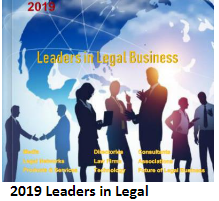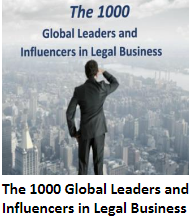Stephen J. McGarry BA, MA, JD, LLM Founder, Lex Mundi, WSG, AILFN & HG.org Admitted: TX LA MN
At its core, the argument
(against advertising) presumes that attorneys must conceal from themselves and
from their clients the real-life fact that lawyers earn their livelihood at the
bar. We suspect that few attorneys engage in such self-deception.… Bankers and
engineers advertise, and yet these professions are not regarded as undignified.
- Bates v. Arizona, 433 U.S. 350, 369 (1977)
The business of law has
radically changed over the past 40 years. This change was underway before Bates
v. Arizona, in which the Supreme Court authorized advertising. The case transported
the business of law out of the shadows and into the open. It meant that lawyers
had the constitutional right to treat the practice and profession of law as a
business.
The case was brought against
John Bates and Van O’Steen, partners in a two attorney legal clinic they
started almost right out of law school. While the case involved only a small
printed ad in the local newspaper advertising reasonable priced legal service,
the ripple effects from the decision ultimately have produced a tsunami going
beyond the United States. It affected the entire world’s legal profession.
Internationalization and now globalization spread the idea around the world
that law is indeed a business with advertising, marketing, pictures, websites,
logos, directories, rankings, mergers, bankruptcies, alternative structures,
consultants, networks, takeovers, and more.
Ethic rules were not
ignored, but they simply could not apply when dozens of firms had more than 15
offices outside of London or New York. Advertising their offices in the United
States meant indirectly advertising the offices in other countries. Local firms
remained handcuffed by the rules and sought out business alternatives to
protect their market. The underlying ethical rules governing the practice and
the business of law began to erode.
More competition meant that
more services were offered and more products were created to allow firms to
openly compete. Products and services were now aimed at getting a competitive advantage
and increasing profit. Almost anything seemed to be okay for the small
advantage of obtaining and keeping a client.
However, the business of
law was still largely tethered to the earth until the mid-1990s.
The Internet and
communications technology propelled the business of law into a new era. The Internet,
while applicable to every business, has asserted a profound effect because law
is a business based upon information. In the practice of law, it is
information on clients and opponents.
In the business of
law, it is information on business practices.
The authors of this
compendium have explored each aspect both on the micro- and macro levels of the
business of law. Each of the chapters in this book relates back to the changes
that have manifested themselves. Consultants have become specialists; in
fact, everyone has become a specialist.
So where does the business of law go from here? In my
opinion, five primary macro trends will push the business of law into uncharted
waters.
Law firms’ structures will change. Five of the very
largest law firms have opted to become networks using Swiss vereins as a way to
accelerate their expansion. They have copied the largest accounting networks,
whose brands are recognized worldwide. This will push the largest firms to move
even farther toward a new business entity model. This will require
restructuring, redeployment of resources, training, and technology to manage
the attorneys in culturally diverse offices. The expertise to accomplish this
will be found both in-house and with outside consultants who can lead the firms
into the unknown.
Branded firms will compete with the largest
independent regional or national firms. The branded firms will also
increasingly compete with local firms in order to effectively and efficiently utilize
their resources. This will require new services and products for both the
largest and the smallest firms.
At the same time, outside of the United States, the
PwC, Deloitte, KPMG, and E&Y legal networks will rapidly redeploy into the
legal market by focusing initially on tax, mergers and acquisitions, labor,
immigration, and other commercial areas. This will be a cause for concern for even
the largest independent firms, given the resources and organizations of the Big
4.
Social media marketing will come into its own as the
Internet generation takes leadership positons in law firms and corporate legal
departments. This will allow the smallest firms to compete with the largest.
Specialty firms will become even more specialized and be able to market their
services using social media.
Technology combined with redefining legal services has
resulted in the unbundling of services traditionally provided by law firms.
Firms and corporate clients will have an opportunity to take advantage of these
services. The leaders and influencers will affect the pace and development of
these alternatives. Both law firm and corporate counsel leaders will create alliances
with the alterative resource providers.
John Bates and Van O’Steen were leaders who challenged
the legal profession. Today’s leaders in legal media, consulting, networks, law
firms, bar and professional associations, legal process outsourcing, and other
services and products will continue this tradition by posing the same
challenges.

 Software
Software Law
Law Legal
Legal






